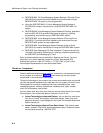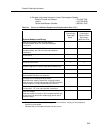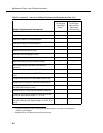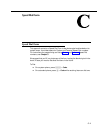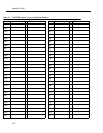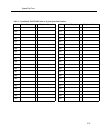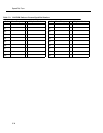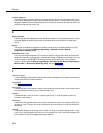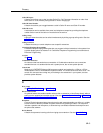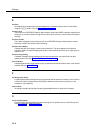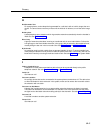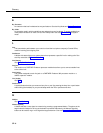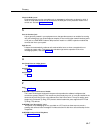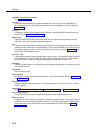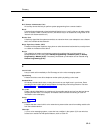
Glossary
GL-2
Auxiliary equipment
Telecommunications equipment (other than system phones) that can be connected to the control
unit. Auxiliary equipment includes industry-standard devices that can connect directly to the public
telephone network (such as standard phones or fax machines), as well as devices that require the
interface provided by the control unit.
B
Background Music
A feature that provides background music through the speaker of an idle system phone for a user’s
work area. Background Music plays the pre-recorded material from the Music-On-Hold audio
source.
Backup
The system and telephone programming settings can be saved on a Backup/Restore PC Card
using either of two features: Backup Programming—Automatic (#123) or Backup
Programming—Manual (#124).
Backup/Restore PC Card
A Lucent Technologies proprietary PC Card that is used like a floppy disk to back up system and
telephone programming settings and to restore these settings if they become corrupted. This card
must be inserted in the PARTNER Endeavor processor module before you use the system’s
backup or restore features [Backup Programming—Automatic (#123), Backup Programming—
Manual (#124), or Restore Programming (#125)].
See also
PC Card.
C
Call Answer Service
A voice messaging system feature that lets callers leave a message at an unanswered extension or
transfer themselves to another extension.
Call Assistant
See
Intercom Autodialer.
Call Coverage
A feature that lets users send their intercom and transferred calls and calls on their owned lines to
a covering extension when they are unable to answer calls.
Call Park
A feature that lets a user put a call on a special type of hold, so it can be picked up from any
extension in the system.
Call Waiting
A feature that lets standard phone users receive notification of a second incoming call when they
are busy on a call. The user can press the switchhook to put the first call on hold and answer the
second call.
Caller ID
A feature that displays an incoming caller’s number (or name) on a system display phone. To get
Caller ID, you must subscribe to the service (if it is available) from your local phone company and
connect Caller ID lines to the appropriate system modules.



